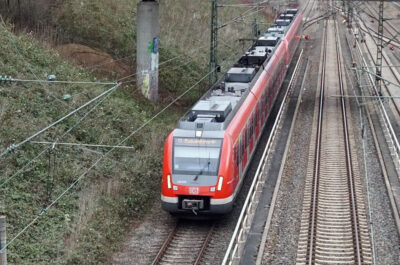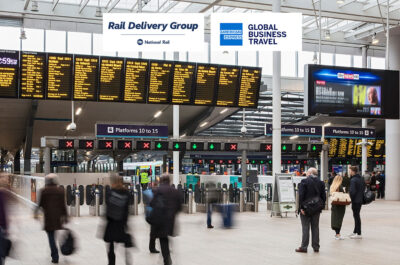According to a Eurobarometer survey, 58% of Europeans are satisfied with rail services in their country, but more needs to be done to improve the service offer. Satisfaction with punctuality and reliability is greatest in Ireland, Latvia, Austria and the UK (above 73%). Dissatisfaction is highest in Italy (44%), Germany (42%), Poland (40%) and France (39%).
According to a Eurobarometer survey, 58% of Europeans are satisfied with rail services in their country. However, comparatively few Europeans take the train. In some countries, the number of users who consider it overly complicated to buy tickets is worryingly high. And some 19% of Europeans do not use the train because of accessibility issues. Persons with reduced mobility complained in particular about bad accessibility of train carriages and platforms and a lack of information on accessibility when they are planning their journey.
Commission Vice-President Siim Kallas, in charge of transport, said: “Only a quarter of travellers in the EU take train on a regular basis. This is not enough. We need to make rail travel more attractive, and this study has shown us very clearly where action is needed. For example, it is unacceptable that it is so complicated in some countries to buy train tickets. Opting for a train needs to be as quick and easy as getting the car out of the garage.”
The representative survey of 26,000 Europeans was conducted to examine EU rail passengers’ satisfaction with domestic rail services, including trains themselves, railway stations and accessibility for persons with reduced mobility. It follows up on a similar survey carried out in 2011.
The results of the survey confirm that more needs to be done to make railway a customer-friendly mode of transport. In January 2012, the Commission tabled the 4th railway package with far-reaching proposals to open domestic passenger rail services to competition.
Tickets and information
The overall level of satisfaction with the ease of buying tickets has not improved since 2011 (78% satisfaction) with however big improvements in Austria and Greece (14 and 10 percentage points increase respectively), but worrying increases in dissatisfaction in Italy, Denmark and Slovenia (all more than 10 percentage points).
Satisfaction with the provision of information during train journeys, in particular in the event of delays has remained insufficient (less than 50% satisfaction). The highest rates of satisfaction are found in the UK (70%), Finland and Ireland (68% and 62%). Highest rates of dissatisfaction are found in France (47%) and Germany (42%).
The 4th railway package contains proposals that will enable common information and integrated ticketing systems.
Reliability
Satisfaction with punctuality and reliability is greatest in Ireland, Latvia, Austria and the UK (above 73%). Dissatisfaction is highest in Italy (44%), Germany (42%), Poland (40%) and France (39%).
Satisfaction with the frequency of trains is essential in attracting travellers – timing is a critical factor affecting travel consumer decisions. Overall, 59% of Europeans are satisfied with frequency. Italy and Central-/South-Eastern Europe have the lowest satisfaction rates.
Proposals, in the 4th railway package to reinforce infrastructure managers would strengthen the management of the railway network and improve reliability.
Under the new EU infrastructure policy, the EU is investing €26 billion in financial support for pan-European transport projects, notably for railways, to build cross-border missing links, remove bottlenecks and make the network smarter.
Accessibility
Only 37% of Europeans are satisfied as regards overall accessibility of stations for persons with reduced mobility. Satisfaction is highest in the UK (61%), Ireland (56%) and France (52%). Below-average satisfaction rates are found in Germany, Sweden, Italy and Eastern Europe.
Only 46% are happy with the accessibility of platforms (40% for carriages), and even fewer with pre-journey information on accessibility (39%) or assistance for persons with reduced mobility (37%). Percentages go further down when respondents themselves are directly concerned (43% satisfaction with accessibility of platforms and 37% with accessibility of carriages).
Questions of accessibility are essential in improving the modal share of rail, in particular in the context of the ageing of the European population. 34% of respondents who never use the train cited at least one accessibility issue as a reason why they do not use the train. This could mean that rail is not reaching some 19% of the EU population because of accessibility issues.
Complaint handling
Satisfaction with complaint handling has increased by an impressive 11 percentage points since 2011 – showing the first effects of the implementation of the Passenger Rights Regulation1. In 4 Member States (France, Latvia, Finland and Spain), satisfaction has even improved by more than 20 percentage points.
Current use of trains in the EU
- Only 35% of Europeans use intercity trains several times a year or more, although 83% live within 30 minutes of a train station.
- 32% of Europeans never take intercity trains.
- 53% of Europeans do not use suburban trains at all, although 31% live within 10 minutes of a train station. Only 14% use suburban trains several times a week.
- Cars are still the dominant means of transport in Europe, but the pattern is changing: The average European travelled almost 9500km by car in 2010 – that is 100km less than in 2004.
EUROPEANS’ SATISFACTION WITH RAIL SERVICES
Theodore is the Co-Founder and Managing Editor of TravelDailyNews Media Network; his responsibilities include business development and planning for TravelDailyNews long-term opportunities.




































































































































